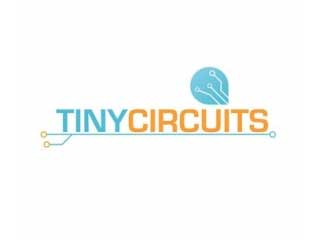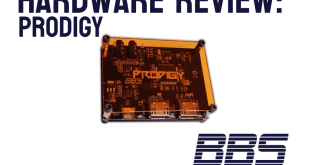A few weeks back at Maker faire Detroit 2016 I got an awesome chance to meet the team of TinyCircuits!
So I felt that I must get an interview with them, thus begins my wonderful opportunity talking with Ken Burns Founder and President and also lead engineer Ben Rose along with the rest of the team.
TinyCircuits is a maker of tiny open source electronics that let you create your own miniature electronic projects. Our main product is the TinyDuino – an Arduino compatible platform the size of a US Quarter. The TinyDuino platform is completely modular and works like tiny electronic LEGOs, so you can easily add complex functions, like GPS, WiFi, motor control or graphics displays to your projects just by plugging the expandable modules (called TinyShields).
We serve the Maker community and are Maker’s ourselves – we make all TinyCircuits products in our factory in Akron, Ohio, USA, and take great care to make sure the products we ship out are the highest quality.
I asked Ken Burns and Ben Rose to answer a few questions to help us all know more about this awesome company and what they do.
And so now let the interview begin.
INTERVIEW:
1. Would you please tell our readers what it is your company does?
We design and manufacturer tiny electronics (hence our name, TinyCircuits). Our main market are “Makers” – hobbyists, students, artists, who like to create their own electronic projects. Our main product line is the TinyDuino, which takes the very popular Arduino electronics platform and shrinks it down to the size of a quarter. It’s also modular and works like little electronic Legos, so you can snap together the different blocks you need for a particular project with no soldering, so you can add sensors, motors, WiFi, GPS, Bluetooth and displays.
2. Was it difficult getting started in the tech field in Akron, OH?
Not at all, the US Midwest actually has quite a large engineering and manufacturing base and a number of engineering universities. Before starting TinyCircuits, I (Ken) got a BSEE and MSEE from the University of Akron and worked for 15+ years in electronic product design at a variety of companies in the area, including a mobile electronics startup, a large industrial electronics company, and 10 years at a product design firm working with everyone from startups to Fortune 50 companies to design products.
The cost of living here is also very low compared with the coasts, we’re able to operate a fairly large manufacturing facility for electronics assembly at a very low cost, so we’re actually able to keep our manufacturing in house and be cost competitive with making these products overseas, which isn’t possible in a place like Silicon Valley.
3. What has been one of your favorite projects you and your team have put together?
Ben – about a year ago we had a number of new boards coming out, so I wanted to make something that could test a number working at the same time, so we created a small (Tiny) Plane made out of some scrap foam we had around the shop. On the plane side we had a TinyDuino processor, motor driver, 9-axis sensor and 433MHz radio board along with two motors, and for the controller we used a TinyDuino, a TinyScreen, 433Mhz radio and Joystick board. The tiny plane actually flew really well! And we could relay the 9-axis data back and display it on the screen so you could see some roll and pitch information as you flew it.
4. What has been the most enjoyable aspect of doing what you do?
We go to a lot of events (like Maker Faires) every year where we get to interact with people using our products, it’s always really enjoyable to see the different projects that people come up with, or someone new seeing our products for the first time and have an amazing response to them.
5. What was the inspiration for the Tiny Arcade?
In late 2014, we came out with a standard add on board for our TinyDuino platform, called the TinyScreen, which is a small color OLED display that is extremely compact and easy to use. We launched a Kickstarter around this and showed off a few different projects that the users could make with it, such as a Smartwatch, little gauge, and a tiny video game platform with joysticks. The Video game thing was somewhat of a lark, we thought it was cute but people really gravitated towards the idea and that’s the one thing everyone loved about it.
So as we were shipping out the TinyScreens for the Kickstarter campaign, a friend of ours brought in a small Pac-man candy tin he found, which seemed to be the right size for a TinyScreen, so we got the idea to make a little arcade cabinet. The candy tin size didn’t really work out well, so we designed a 3D printed cabinet around the circuitry as a basic project demo. We took this to several Maker Faires, and the reaction was amazing, and people kept asking about where they could buy one, so that really convinced us that we should turn this into a product.

6. How difficult do you feel it is for a novice programmer/developer to create with the products you offer?
It’s fairly easy to get started, our platform is basically the Arduino Uno shrunk down and works the same way. An 8-year old used our circuitry to create a Smartwatch for kids last year (check the O Watch). The difficulty really depends on what you’re trying to do, if you just need to blink some LEDs (which is where most people start), pretty much anyone can do that very quickly, if you’re looking to create something internet connected, the difficulty starts to go up. But we try to provide tutorials and example code for each of our boards, so there is a good starting point to build from.
7. Out of all of your products what is your team’s favorite?
It’s pretty unanimous around here that it would be the TinyScreen+, which is the heart of the Tiny Arcade. This board is pretty much the evolution of what we’ve been doing over the past few years, and packs a tremendous amount into a very small package, it has a 32-bit processor, OLED Screen, USB, battery charging and buttons in a package slightly larger than a postage stamp. We can play video on this, do video games (like the Tiny Arcade), make wearables. It’s definitely a pretty amazing little product.
8. What if any products do you have planned for the future that you can share with our readers today?
Definitely – robotics are a main focus for us right now. We already have a lot of connectivity options (Bluetooth, WiFi, etc), and sensors, but very tiny robotics and motor control is still something not really available. If you look at most of the hobby robot or motor driver kits, they tend to be rather large robots with huge motors and a bunch of ugly circuitry and wires. We have a new tiny servo board coming out, some improved motor controllers and an integrated tiny robotics board, which will enable people to do some very small scale motor control and robotics projects.
9. What advice would you have for someone looking to program games for the Tiny Arcade?
A basic knowledge of Arduino is definitely helpful but not necessary required. The Arduino environment is C/C++ based, and the games are handled at a pretty low level, so there aren’t any fancy game engines being used. All the games are open source, and we’ve had some great talent help contribute games for the platform, and create some game APIs and simulators for the system to make develop easier, so a good place to start would be to start working through some of the existing games source code to get a feel for the platform, then start working out your own games. We do plan on creating more tutorials and better instructions about this in the future, so we really want to see more people start developing for this to help them learn to program, and also it’s a lot of fun!
10. In closing, is there anything you want our readers to know that you haven’t shared with us yet?
We’ve really had a lot of fun creating the Tiny Arcade and now that it’s getting out into people’s hands (the Kickstarter rewards have just shipped out over the past few months), we can’t wait to see how the community starts to hack this and what they create.
We want to thank Ken Burns and Ben Rose for taking the time to talk to me and to answer my questions so that you may learn a bit about this awesome company and group of people.
Surely you want to get one of the Tiny Arcade units in your hands, so you can start programming your own fun and games into this awesome little device.
Go here to tinycircuits.com to get your self all the stuff you will need and everything else for all you’re other projects.
Thank you for reading and keep doing it for the love of the game.
 Hackinformer Your device needs to transform, we are here to inform
Hackinformer Your device needs to transform, we are here to inform









